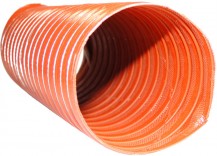SAME DAY SHIPPING ON ORDERS PLACED BY 4 PM | 877-4-SPRUCE
B-36J Peacemaker Model
$304.00/Each
Part# 13-10491
MFR Model# AB36T
MFR Model# AB36T
Overview
|
The Convair B-36 Peacemaker was the first thermonuclear weapon delivery vehicle and the first operational strategic bomber to truly have intercontinental range. It was the largest piston-engined aircraft ever to be mass-produced. It was also the largest combat aircraft ever built, although there have been larger military transports. The B-36 set the benchmark for subsequent US long range bombers such as the B-52 Stratofortress and B-1 Lancer. The development of the B36 was brought about by Nazi Germanys aggression and subsequently by the Japanese attack on Pearl Harbor. The United States Army Air Corps required a long range bomber and opened up a design competition on April 11, 1941. Despite the sense of urgency, the B-36 program progressed slowly. Existing technology failed to satisfy the military requirements, early wartime demands exceeded materials, and weapons more readily available received the highest priority during the war. The Peacemaker had four bomb bays that could carry up to 86,000 pounds of bombs, six remote-controlled retractable gun turrets, and fixed tail and nose turrets. It was the only aircraft designed to carry the T12 Cloud Maker, a gravity bomb capable of producing an earth quake bomb effect. The B-36s maiden flight was on August 8, 1946, and all variants served under the US Air Force Strategic Air Command from 1948 to 1958. On Labor Day, September 1, 1952, two-thirds of the 7th and 11th Bomb Wings B-36s were incapacitated, not by enemy action, but by a windstorm. At 6:42 PM, a tornado made a direct hit on the Carswell Air Force Base, scattering the enormous bombers like empty milk cartons. Flight operations were transferred to nearby Meacham Field and other military bases. Most of the planes were repaired and flying again in less than five weeks. The final version of the Peacemaker, the B-36J, had two additional tanks which allowed an additional fuel load of 2,770 gallons. It also had a much stronger landing gear, permitting a gross takeoff weight of 410,000 pounds. A total of 33 B-36Js were accepted by the Air Force, starting in 1953. Phaseout was completed in 1959. |
WARNING: Cancer and Reproductive Harm - www.P65Warnings.ca.gov. |
Q&A
Please note, Aircraft Spruce's personnel are not certified aircraft mechanics and can only provide general support and ideas, which should not be relied upon or implemented in lieu of consulting an A&P or other qualified technician. Aircraft Spruce assumes no responsibility or liability for any issue or problem which may arise from any repair, modification or other work done from this knowledge base. Any product eligibility information provided here is based on general application guides and we recommend always referring to your specific aircraft parts manual, the parts manufacturer or consulting with a qualified mechanic.








 FREE Shipping
FREE Shipping










